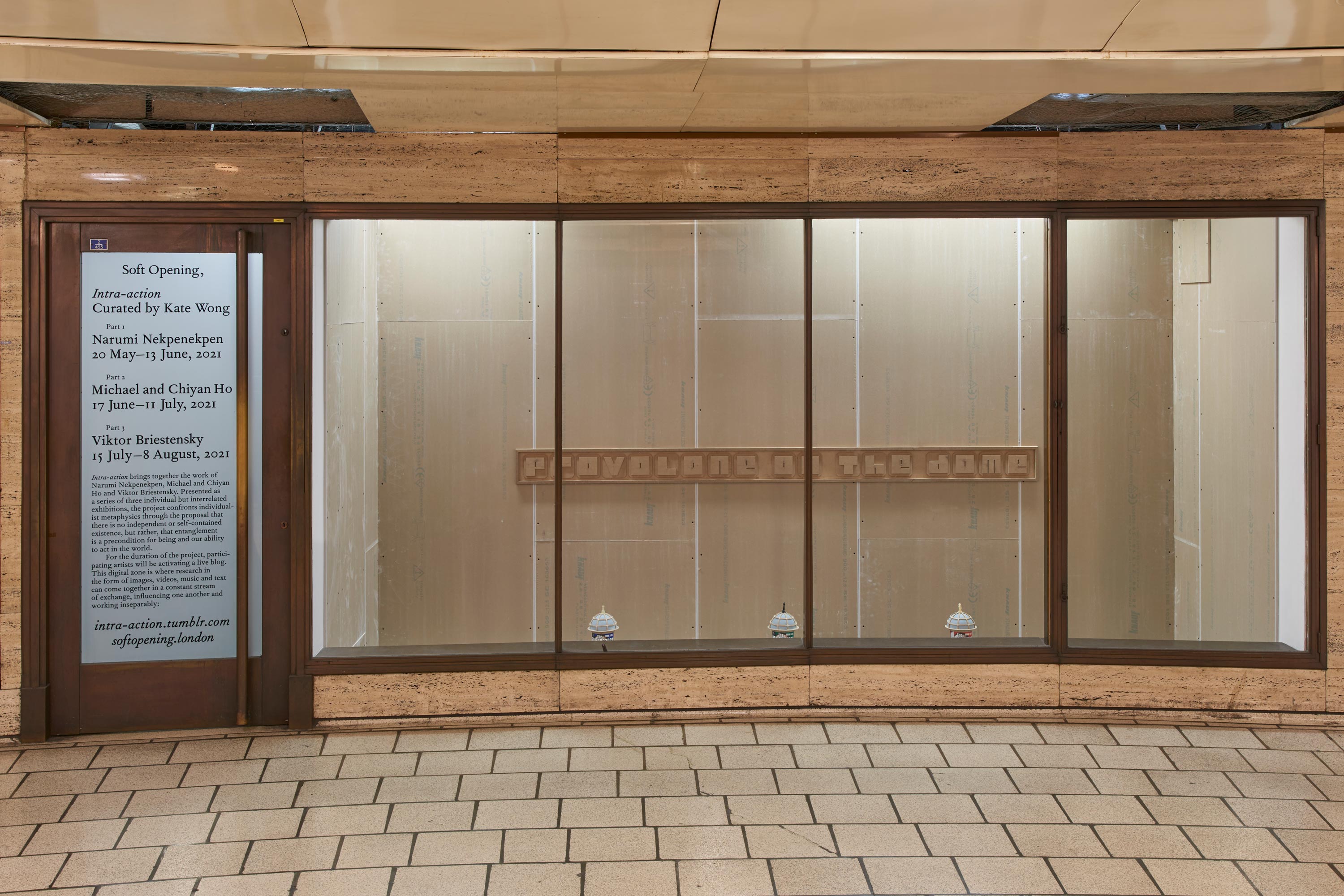The city is an organisational concept. Our relationships to each other and to ourselves are shaped by a city’s regulations and architectures. Generated by the strategies of governments, institutions and corporations, the city is a “grid of discipline”, a function of and functioning to reinforce power.
For Intra-action: Part 3, Slovakian-Canadian artist, Viktor Briestensky, presents an installation that continues his ongoing deliberation of the minuscule and the deviant as forms of resistance. Working from the understanding that we cannot ever step completely outside of the established socioeconomic order, Briestensky’s practice labours through the small everyday ways in which we can subvert power—the shortcuts, the secret paths and the tactical routes that offer a potential quick escape from the rat race of neoliberal technocapitalism.
Implemented for the first time in Berlin in 1955, Litfass advertising columns were an infrastructure designed to combat the spread of graffiti and rogue advertising. In Briestensky’s installation in Soft Opening’s gallery in the Piccadilly Underground Tube Station, three advertising columns appear in miniature, all plastered with images of the notorious fictional Italian-American mob boss, Tony Soprano. A sociopathic but highly influential character, Tony can be seen as the fulcrum in stitching together an understanding of criminal drives, as well as the mass appeal and fetishisation of the figure of the antihero. With a vested interest in the vernacular architecture of urban landscapes, Briestensky allows found objects, such as DVD covers and chess pieces, to act as guides in his process of making. Blurring the line between readymades and craft, Tony (Red), Tony (Blue) and Tony (Green) offer up a perspective through which to consider the hypocrisy of Hollywood and pop culture, especially as they relate to ideas surrounding masculinity and crime. The sculptures implore us to consider the role of signs and symbols in the formation of power.
Provolone on the dome (2021) continues a series of text-based wall reliefs in which the artist commemorates colloquialisms, as well as obscure, covert slang. Drawing inspiration from instances in which cheese and cash are interchangeable—the wrapped single slices of processed cheddar that were included in welfare packages in America following World War II; or a bank in the Emilia-Romagna region of Italy accepting parmigiano-reggiano as collateral for loans—the work is propelled by the murkiness of value and semiotic exchange. If, as Karen Barad has suggested, there has been an excessive amount of power that has been granted to language and other forms of representation, then Briestensky’s text-focused sculptures reveal a manner of communication resulting less from formal linguistic meaning, and rather, emerging from association, abbreviation, humour, irony, and out of necessity.
Briestensky’s installation invites us to cross over into a parallel world that exists within the gaps and holes of our familiar surroundings. Seemingly negligible, the artist suggests that it is within these interstitial places that we may actually locate ways of thinking laterally or tactically, in spite of overarching and binary ideological systems. The artist suggests that it is within these hidden spaces that we might very well locate new ways of understanding our desire, and how it is formed by and swept up pell-mell into the incessant chaos of the contemporary order.

